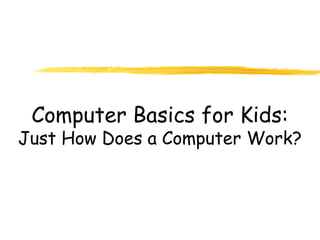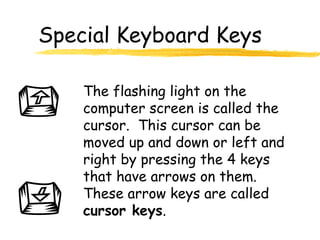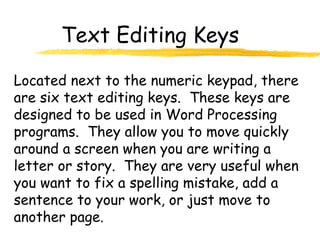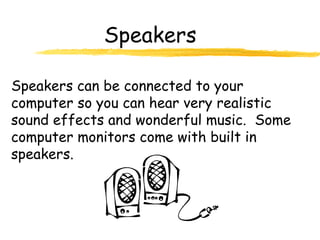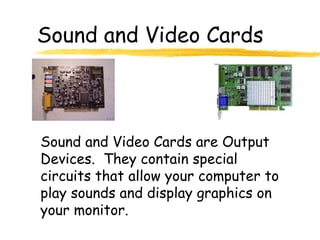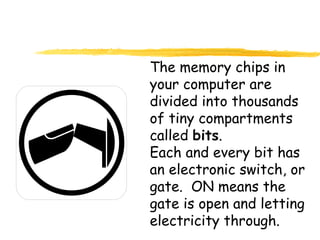This document provides an overview of the basic parts and functions of a computer. It describes the main components of a computer including the monitor, CPU, disk drives, ports, memory, motherboard, power supply and how they work together. It explains how computers process information by taking input, processing it using the CPU and producing output. Key terms like bytes, kilobytes, megabytes and gigabytes are also defined to explain digital storage and memory.
